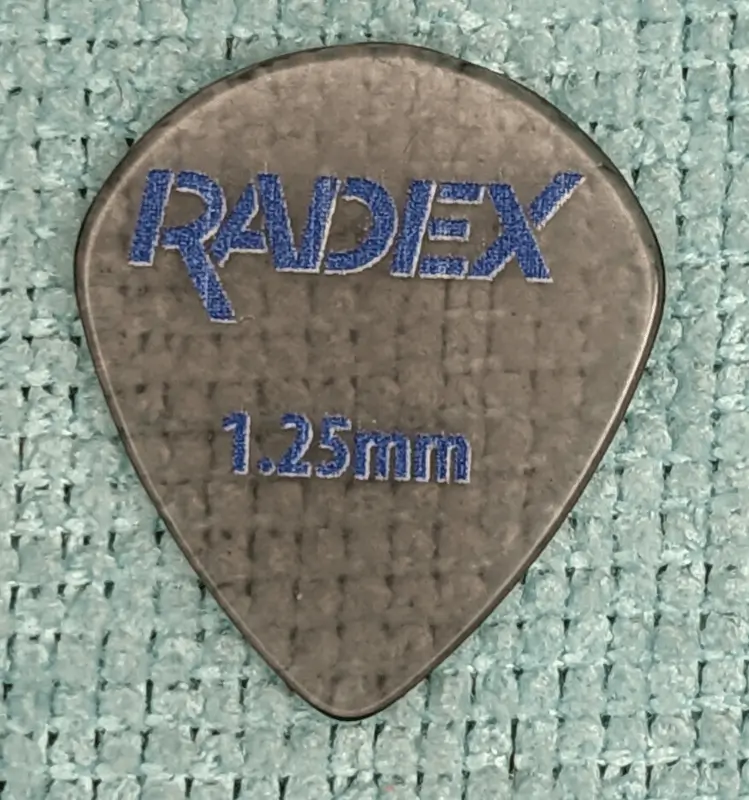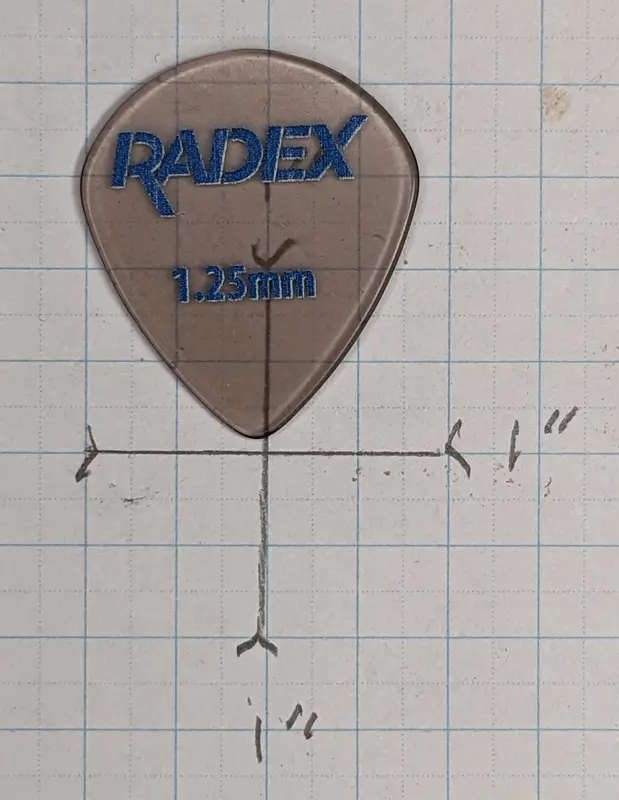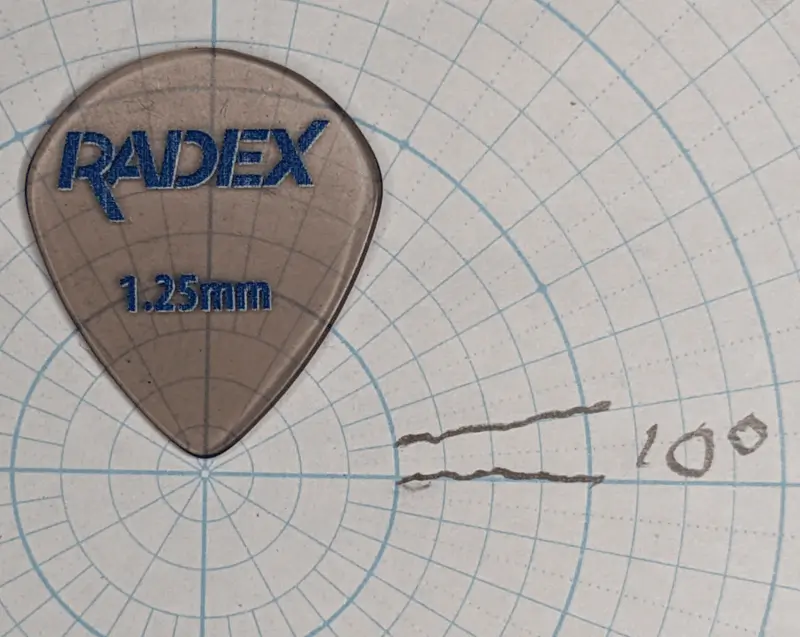
An Ancient classic made new the D’andrea Classic #551 in Radex.
A fledgling company of a century ago came up with a new way to make plectrums when a big problem grew from the over-slaughter of Hawksbill Sea Turtles. The D’andrea Classic #551 in Radex Is a modern product of their century long efforts.
And now, D’andrea is still a world leader in Plextra, they began offering picks right after Tortoise Shell Came out of favor. They are the OG of the pick industry, and the #551 shape, similar to the JazzIII (both of which I discuss here). It is a small pick, one many pros would like!
From D’Andrea’s Site, Radex is a special material not seen in my plectra. You can read a brief article on Radex here.
The PolyphenolSulfone is very wear resistant and well lend itself well to vigorous playing for many hours. The D’andrea Classic #551 in Radex will faithfully see an artist through lots of gigs.
The shape and size of the D’andrea Classic #551 in Radex is intended for more precise and articulate playing, usually in more melodic work rather than cowboy chord strumming.
This is a shredder’s pick, plain and simple. Lots of accuracy and intimate feel lets fast riffs blow past your audience. That is, if you are an advanced player, of course.
The shoulders are sloped on the D’andrea Classic #551 in Radex. Furthermore, the tip is well defined but still rounded And along those lines, the material is a ghostly gray. (A thing about this color: if you are one out of a million people that can see near UV light, it looks almost like this, such as me, I can, I know, weird, huh? Forget I told ya!)

The pick is an OG pick, but with a twist: it is made with a special plastic coming from proprietary sheets of “Polyphenylsulfone”.
It is a little bit similar to what a baby pick would be if its father was Acetal and it’s mom was Acrylic. It’s very durable and grips “medium-well”. Speaking of baby picks, this 551 pick is one model, they also offer the material in #’s the 351 type shape (Traditional shape) and 346 (Realeaux shape).
As I play on my friend’s Schecter I hear a more mellow but richly defined tone, still assertive but Jazzy. Yup, this would be fine in Jazz, Country Picking (on electric), and warmer leads in Rock. The D’andrea Classic #551 in Radex would give a familiar performance on a Gold Top LP (if you were so fortunate to have one, lucky you!)
The material glides well off the strings with zero scratchiness, and also zero chirps, it’s just right as far as that goes.

However, despite the pick being nice, this 551 is not going to be the first choice of the new player, this is more for seasoned players and hands that are not too big.
I have medium hands with fairly thick fingers so it works for me, but I’m still building my skills with smaller picks. (Update note: Now with more practice in, I can hold it better, guys, practice, PRACTICE, P R A C T I C E !)
As far as that goes, I like this more than many of the Jazz III Acrylic picks I have. Despite it having no texture or holes for grip, it stays put better than you might expect. It is, however, still not a really grippy pick.
I would like to get the other two shapes, especially the 346, and review it for you in the future, less practiced players will probably like that one better and they may LOVE the tone. I definitely like the unique and full tone of this pick.
Now for the specs on this D’andrea Classic #551 in Radex
| Material | Attack Tone | Decay Tone |
Proprietary Radex | Warm but assertive | somewhat softish |
| Durability/Wear | Comments/Dimensions | Shape |
| very durable | Durometer Shore D 76 H hardness | Traditional D’Andrea #551 similar to JazzIII (See shapes section) |
| Grip and Feel | Flexibility | Likely Use |
Decent grip not extremely grippy however | Stiff but slight pliability | Jazz, Hard Rock, Country picking… |
| Thickness | Width and Height | Resonance |
| 1.12mm actual | 23.6×27.0mm | Rich and Plastic-y with tone of a coin |
| Tip Style | Bevel? | Approx. Cost |
| fine point but not sharp | Basic rounded | About $8.50 for 6 US |
Now, you serious players out there, artists, recorders, teachers, and performers: Try this pick out!
For those of you who are in the upper intermediate zone, you will probably find this pick pretty cool unless you play acoustic. If you play a mando or something else, maybe this is just what you are looking for.


Comments
One response to “D’andrea Classic #551 in Radex”